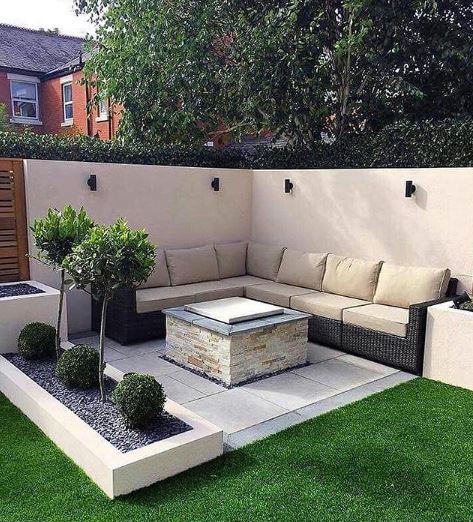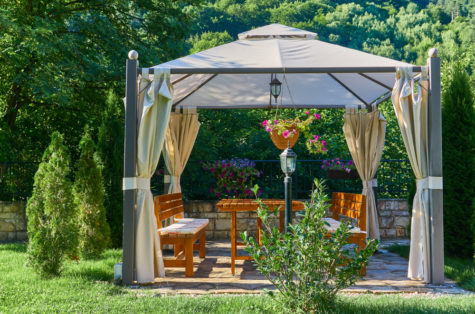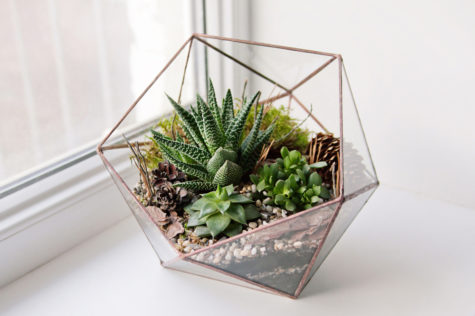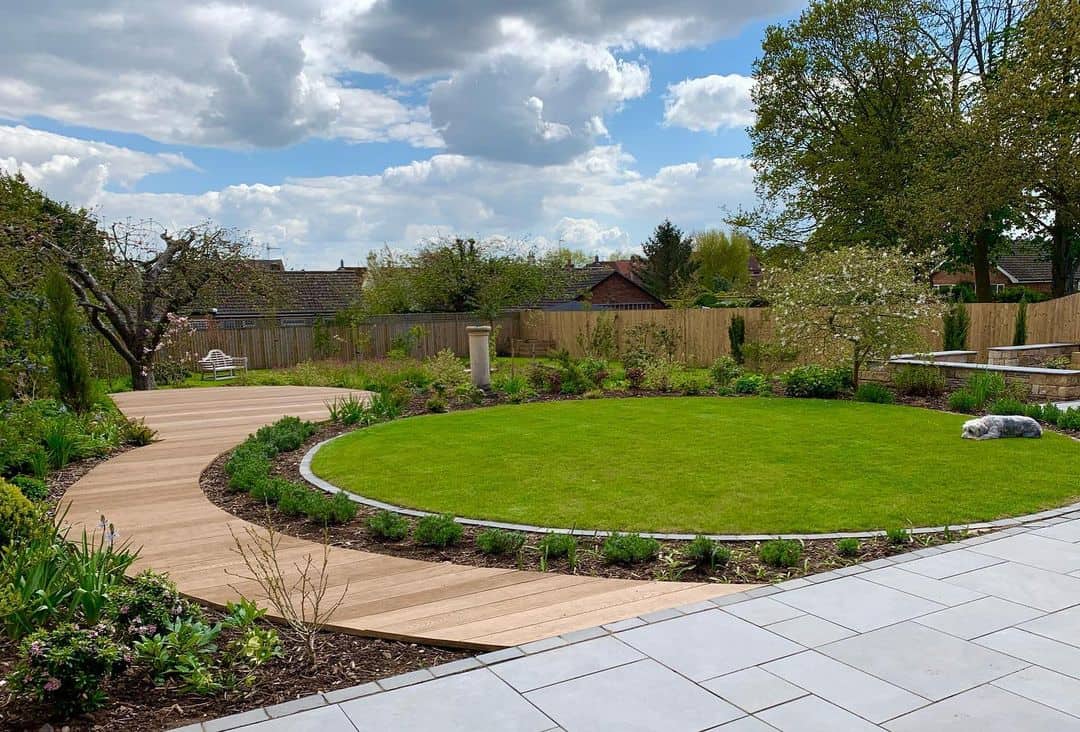When you take pride in an immaculate garden, you know that edging is the secret to success. A crisp border is both functional and beautiful, resulting in a flawless finish for your lawn, patio and flower beds.
Maybe you’re a garden-edging pro and are looking for some inspiration, or perhaps you’ve only recently realised what a difference your flower bed borders can make. Learn some new ways to keep your plants in check with our list of lawn edging ideas.
Wait, what exactly is garden edging?
Garden edging is essentially a narrow strip of hard materials that help to delineate between two sections of your garden. You might use them to separate your lawn from your deck, or your flower beds from your patio.
Visually, garden edging adds a charming design element that makes your garden layout look more deliberate. Practically speaking, edging can keep compost, mulch or gravel from being scattered around your garden, and act as a barrier to weeds.
Which materials should I use for garden edging?
Materials like stone and brick are popular for edging. You could also use wood, concrete, tiles… the list is pretty long – which is why we’ve pulled together some ideas here.
As you go down the list, think about the style of your garden (or the aesthetic you would like it to have), and consider how different edging materials could contribute. Your edging should work with the geometry of your garden, and enhance or complement the general colours of your plants, garden furniture and decor.
How to plan garden lawn edging
There’s a lot of choice out there, so before you dive in, start by assessing the space you have. Literally – what are the proportions of your garden, and how big can you go with edging design?
Huge gardens can support big rocks that make a statement, but little spaces look better with more delicate edging styles. Paving blocks are a popular choice for flower bed borders, and are an appropriate size for the average UK garden.
Next, up: what colours are prominent in your garden already? Do you want to complement them with edging in a similar shade, or use a contrasting colour to make your lawn borders stand out?
As we mentioned a moment ago – what’s the style of your garden? Is it eclectic and a little bit overgrown? If so, a natural material like wood or wicker might be best, or something “salvaged”, like decorative tiles or pieces of terracotta. A slick, minimalist garden can be elevated with metal or slate edging.
This plays into your budget for garden edging, too. It’s fairly easy to DIY your edging (unless you choose something like poured concrete), but it’s a long and laborious job. Being resourceful with materials, and careful with how much you need, is the best way to get glorious garden edging on a budget.
Garden Lawn Edging Ideas
Use these suggestions to start planning your own garden edging, and experiment with layouts and shapes to create a unique design that will make your garden stand out.
1. Garden edging with paving blocks
Let’s start with the simplest edging material: classic paving blocks. Weatherproof, affordable and and pretty commonplace, paving blocks can be used horizontally, vertically, or at a diagonal angle. Despite their uniform nature, you can arrange them in various patterns to create subtle visual interest.
2. Roof tiles as edging
Clay roof tiles are really effective edging for flower beds, and their colour and texture adds a rustic charm to your garden. Broken tiles are often resold for a low-cost (look for “recycled tiles” online or at salvage yards), helping you stick to your budget!
3. Wood garden borders
Natural wood makes for an environmentally-conscious flower bed border, either laid out horizontally or as vertical posts. You can buy prepared rolls of edging at most homeware stores, or you can get creative with branches that you’ve trimmed from your garden for the low cost of nothing.
4. Garden edging with rocks and pebbles
Rows of large stones and rocks look striking – but natural – in manicured gardens. Neutral shades go with almost any other colours and textures, but you can also combine different coloured rocks to create a statement. You could also create a rockery garden with a deliberate structure of leftover rocks.

5. DIY gabion edging
If you like the idea of rock borders but want a more modern twice, try gabion edging. Using lots of rocks within a wire cage, the style blends a natural aesthetic with a contemporary finish. You can buy wire crates – or even use chicken wire stapled to chunky posts – and fill them with pebbles and rocks that are the right proportions for your garden.
6. Garden borders with slate tiles
Match your garden borders with a patio or pathway to keep your garden cohesive. Plus, the glossy grey of slate brings out the bright greens of your foliage. Try stacking slate tiles to build raised flower beds and accentuate levels in a staggered garden.
7. Vintage bricks
In contrast to crisp new paving blocks, using salvaged bricks as garden edging keeps cottage gardens looking rustic and whimsical. The natural variation and weathering makes it look as if the bricks have been there for decades, dutifully keeping even the wildest flowerbeds in check. Perfect for a rustic, vintage-styled garden.
8. Repurposed pallets
Recycled materials like wood pallets or railway sleepers are excellent borders for raised flower beds or vegetable planters. Use a combination of stacked planks and planks in rows to provide edging for different areas of your garden. Their imperfect finish looks great in an eclectic bohemian garden, or a minimalist, industrial-inspired garden.
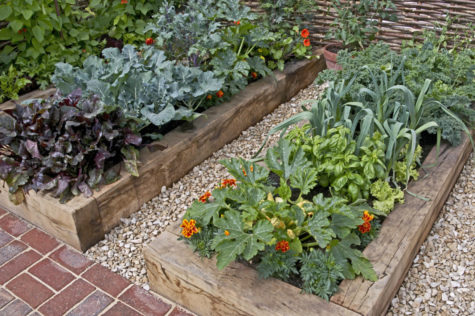
9. Bamboo garden edging
Bamboo is such a versatile material that lends itself to loads of contemporary garden styles as well as novelty themes like Tiki gardens. Short bamboo fencing works really well as flower bed edging, and you can often find different widths to suit how big (or delicate) your plants are.
10. Reusing old ceramics
You might not even have to leave your home to find quirky flower bed edging materials. Next time you’re getting rid of coloured glass or unwanted patterned plates, give it a new lease of life by bringing it into the garden! You can also salvage broken tableware this way, just make sure you carefully sand down sharp edges before leaving them outside.
11. Garden edging using metal
Steel or aluminium edging, like plastic, often comes in rolls and is pliable enough for curved and straight edges. Aluminium provides a clean, modern finish, whereas steel will gradually rust over time (which is still aesthetically pleasing in its own way).
12. Gravel garden edging
If your garden is too small to carry off larger stones, what about gravel? Gravel is easy to lay, and looks especially striking in modern gardens. You will need to devise a way to keep the gravel where it’s supposed to be (it doesn’t mix well with lawn mowers), but it’s a great way to accommodate rainwater run-off from patios or decks.
13. Breeze blocks
Definitely an understated gardening material, breeze blocks can be used as planters as well as garden edging. Be creative with stacking them and arranging them in rows for a cool, urban look.
14. Woven wicker / wattle edging
Little fences made from woven saplings look homely and natural – perfect for witchy, enchanted gardens, traditional cottage homes and earthy vegetable patches. Although they look handmade, wattle fences are difficult to make, so I’d recommend just buying it. They’re great for keeping mulch and gravel where it’s supposed to be, but will look increasingly magical as nearby plants snake through the gaps.
15. Miniature picket fences
Picket fencing: classic, or twee? Well, either way, there’s no argument that when it’s in miniature form, it’s adorable. Bright, thriving flower beds edged in little picket fences will make a quintessential English garden look postcard-perfect. Are you going for an edgy, modern look? Maybe skip this one!
16. Plastic garden edging
On its own, plastic garden edging is pretty unimaginative and doesn’t look great. However, it makes it onto this list because it can be really effective when combined with other types of garden edging. Use it as a primary barrier for flower beds, but decorate it with looser ornamental stones. Or, use clear plastic to create invisible edging – your visitors will be wondering how on earth you keep your lawn so neat!
These garden lawn edging ideas are just one step in creating the outdoor space of your dreams. Don’t forget to check out our other posts for more inspiration, like garden patio ideas and kitchen garden ideas.
Do you have your own interesting take on garden edging? We’d love to hear about it – tell us in the comments!

Save this pin for later

